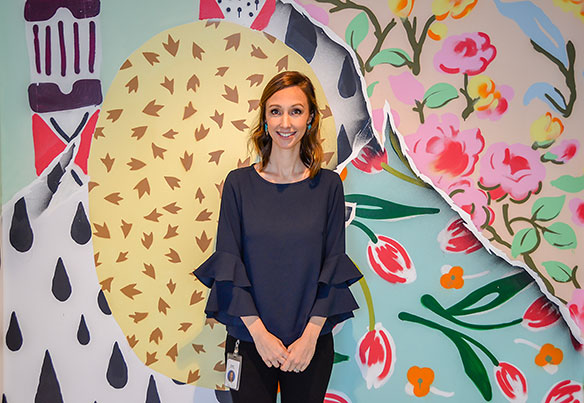
Leveraging Instagram in the travel business
It’s an Instagrammable world
ANN RUPPENSTEIN
They say a picture is worth a 1,000 words, and with 800 million monthly active users, there’s no denying people are drawn to the imagery of Instagram.
Seeking more insights into its users, Susan Rose, director of product marketing at Instagram, says the social media app commissioned a research company to run a study on how people are influenced by content pertaining to their interests and passions.
“People come to Instagram to discover and share their passion, whether that’s travel, food, shopping, restaurants, whatever it may be, there’s such a diverse range of passions,” says Rose, who was in Toronto recently from the company’s headquarters in California.
The results found that, while many also used the app to get updates from their favourite sport teams or players, make car decisions or get style inspiration, travel was a key interest among users.
“62% use Instagram as a tool to build excitement for upcoming trips,” she says. “I think we’ve all had that experience where we see our friend on Spring Break in some beautiful place and then you look out the window and think I need to be there now.”
Not only do people use Instagram to discover places they want to visit, but they’re also using it to check out places to see (even restaurants to try), while they’re in other destinations.
“It’s a mix of aspirational travel, as well as practical tips,” she says.
The Business side
Beyond personal profiles, users are increasingly using the photo and video sharing social media app to connect with businesses. Overall, there are currently 25 million business profiles on Instagram.
“80% of people follow a business, so businesses fit really naturally into the way that people use Instagram today,” says Rose.
In terms of sparking exploration, it’s not just about finding businesses people already know on the platform, but rather coming across new businesses.
“We see that 200 million Instagrammers visit a business profile every month,” she says. “That means they’re going to a business profile to learn more about that business, and two-thirds of those visits come from non-followers, which basically means two-thirds of the people visiting a business profile aren’t following that account, so it may very likely be a new business to that person. It’s a really exciting way, hopefully, to not only tap into your current community, but grow that community as a business.”
Getting creative with stories
One of the fastest-growing products at Face-book, which purchased Instagram in 2012, was the addition of the “stories” component on the app. While the traditional Instagram feed features more carefully curated images that can be edited and filtered prior to posting and remain on a person or business profile, stories display for five seconds within a story (up to 15 seconds for a video), but disappear from an account after 24 hours.
“An element that’s new in the way people are communicating is in the ephemerality so for stories, one of the big advantages is this full-screen immersive experience, but the second and the piece that we really think has unlocked a lot of the sharing that people and brands have done is the fact that it only lasts for 24 hours, so it lowers the bar and lowers the pressure for what you are sharing,” she says. “It’s not something that two years from now you necessarily have to be accountable for.”
Of the 500 million daily active users, 300 million use the stories feature.
“We’re seeing a really strong penetration in terms of stories adoption, and more and more people in the community are getting comfortable sharing and participating in that space,” she says. “50% of the 25 million businesses have posted a story in the last month. As we build these new creative tools in the way of communicating, businesses are using those just as much as is the rest of the community, which is really exciting.”
Some of the ways users can get creative with their stories is through the type mode function, which allows users to turn text into something that’s very visual, GIF stickers, the ability to super zoom, and more.
In terms of engagement, while a photo in a traditional feed is all about the number of likes and comments it gets, stories simply show the number of times it has been viewed.
“It’s definitely something that really helps people feel comfortable sharing, and another element of it, which is not exactly ephemerality but is a difference between your traditional feed is around the feedback that you get,” she says. “There are no likes or comments within a stories post. You can get emojis, send a direct message, but you’re not sitting there watching your like count to understand how it works. It’s more freeform sharing. And you can probably share more sides of yourself than you might feel in your feed.”
Through Instagram’s highlights
feature, users have the ability to integrate stories onto their accounts in a more permanent way.
“If something resonates and you actually want it to stay on their account, you can save it into these collections that we call highlights,” she says.
Beyond businesses, brands and everyday figures, a lot of public figures and celebrities are also taking advantage of the stories feature.
“Justin Trudeau leverages Instagram to show either key important moments or raw footage of behind the scenes of not only his life, but public appearances,” she says.
Shift to vertical
An important thing for companies to keep in mind as they seek to reach new and existing customers on Instagram, is that the way users are consuming content is changing. While the shift to mobile has been widely noted, what could take more getting used to is that 90% of the time people spend on their phone is in the vertical format.
“If you think inherently it’s the exact opposite in terms of the ratio or the mental perspective of how you interact with a photo or a video, than what we’re used to on our computers or our television,” she says. “It really is a 180 degree difference, and it’s something that we need to keep in mind as we think of communicating with people in their most personal space and their most personal device.”
Siting Interjet as an example, she says a recent example of a successful campaign (combined with Facebook’s Canvas for immersive mobile ad units) was when the airline used the platform to highlight what there was to do in Montreal and Toronto, when it launched service from Mexico to Canada.
“Vertical is something that is definitely evolving especially from a business perspective,” she says. “How we talk to brands, how we work with brands, to communicate with our audience, creative is a big hurdle in terms of getting more comfortable operating in this space versus the more traditional means.”
Follow us on Instagram @BaxterMediaCA .
Tips to get started
How travel agents can utilize Instagram
Susan Rose, director of product marketing at Instagram, talks to Canadian Travel Press about how travel agents can take advantage of Instagram — if they aren’t already.
CREATE A BUSINESS PROFILE
The advantage of creating a business profile over a personal account is gaining insights into those who are engaging with the account, such as where are they based, age and sex.
“It’s really a way of getting more insights into who their community is and what kind of content is resonating,” she says. “You just get a lot of information, so hopefully they can grow their community and produce better content.”
SHARE TRAVEL CONTENT
Of all the types of businesses, she says travel agents are lucky because they have some of the best visual content to work with.
“If you’re trying to send someone on a beach vacation, on a ski trip, a really cool town that’s sort of up and coming, there’s so much visual content that you can use to have a compelling story,” she says. “And so whether it is from their feed or their stories product, I could imagine highlights of different locations that people come to their profile and easily see. There’s so much that travel agents could do… Really think about your community and really building that voice in content.”


